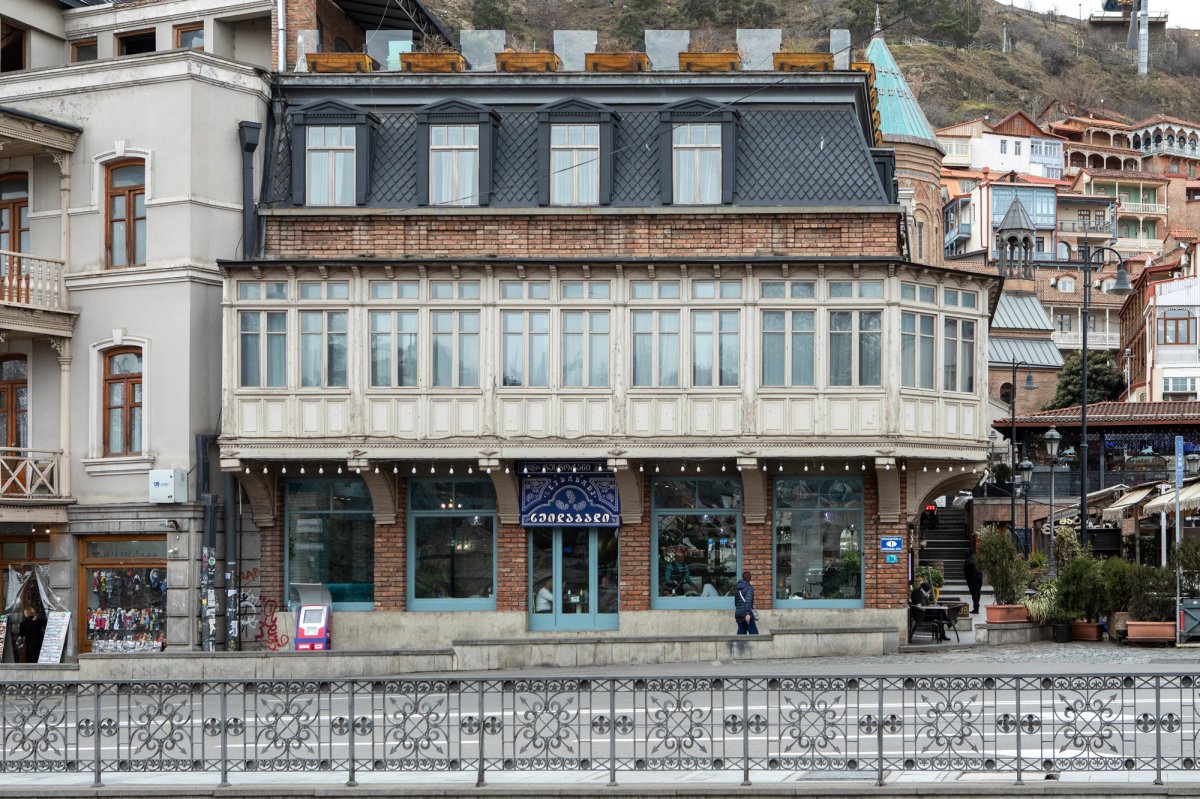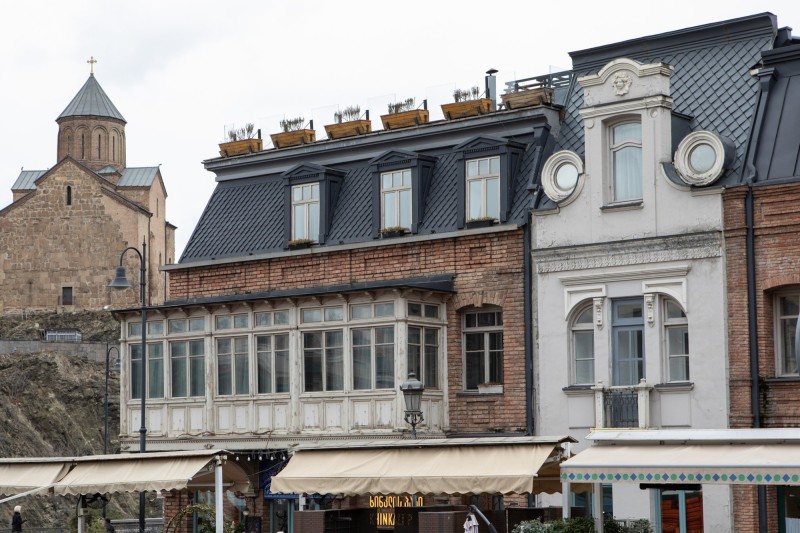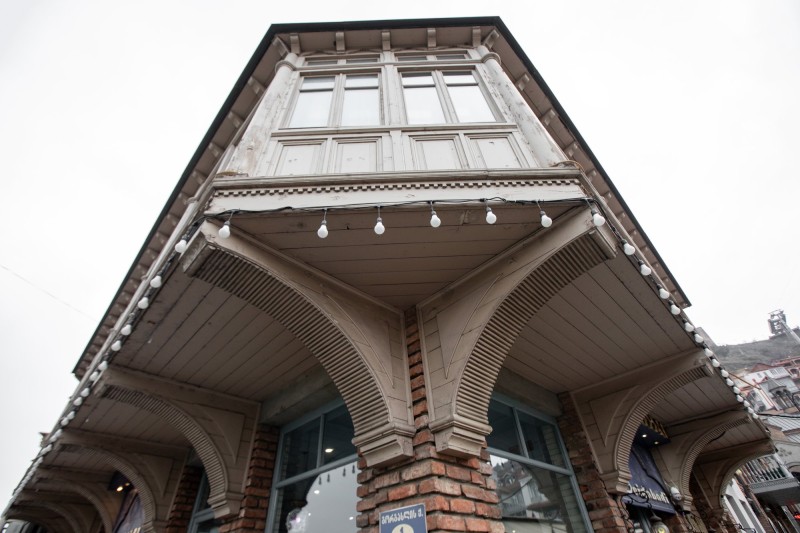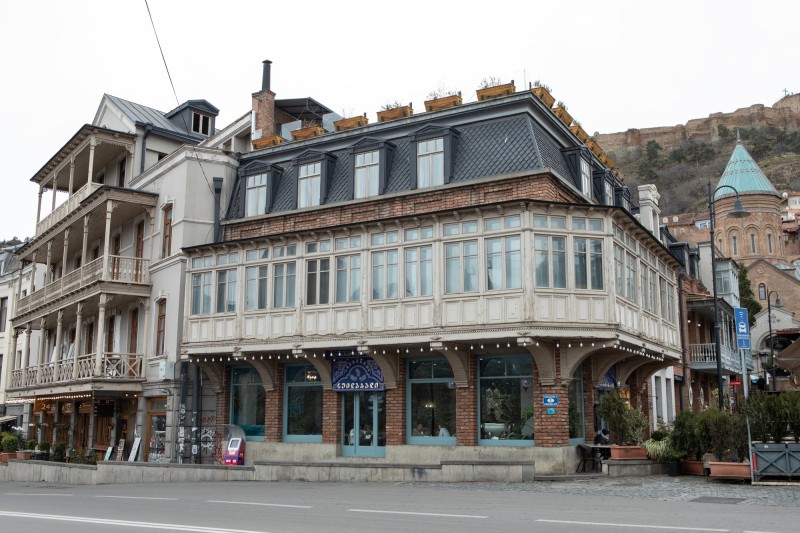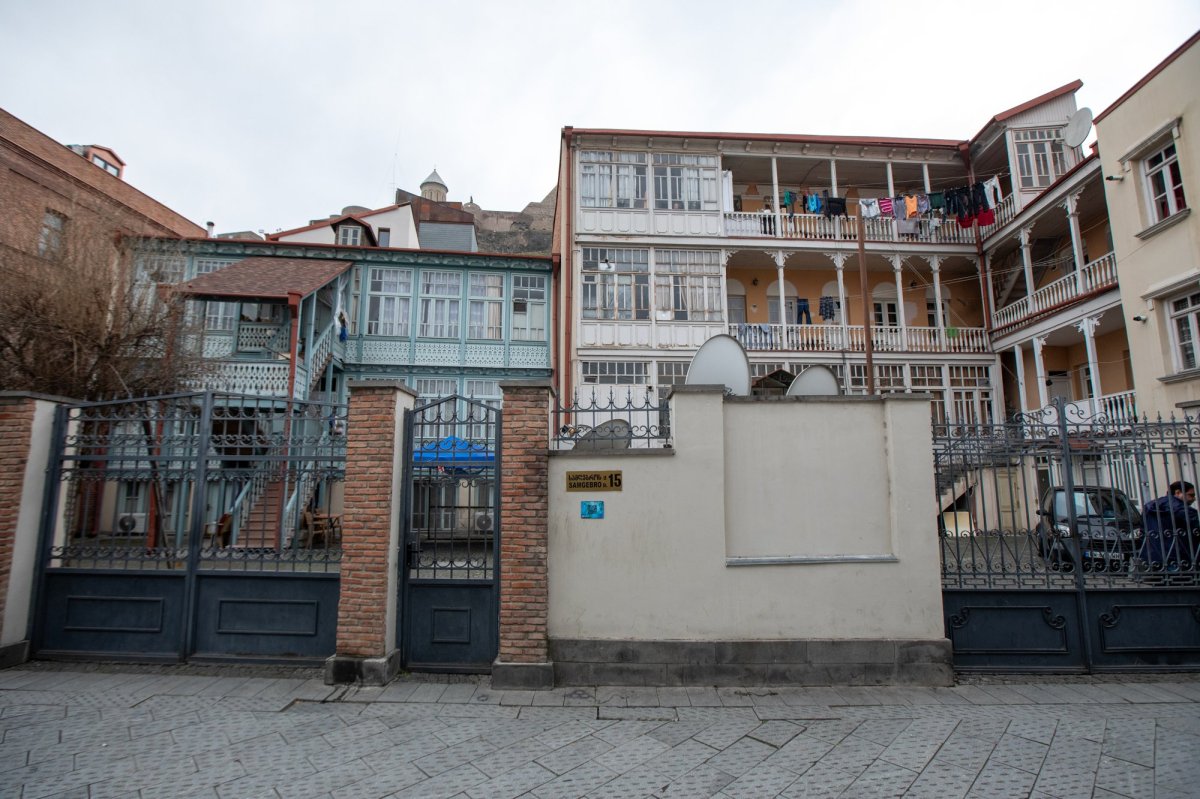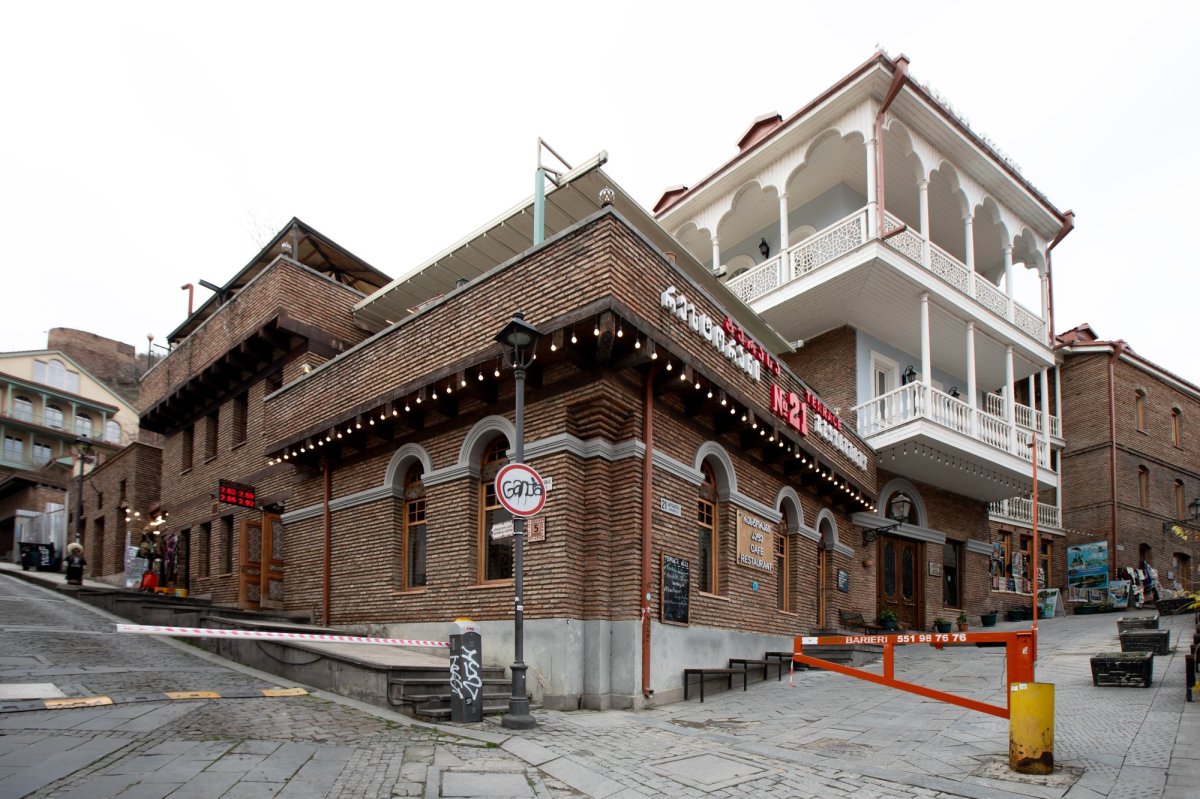
Information in details
The two-story building with a cubic volume, located at 6, Samghebro St., offers us one of the interesting examples of Tbilisi's balcony-glass houses. It is opened to the environment with a wooden glass screen arranged on the entire perimeter. The glass gallery suspended on wooden consoles is the main artistic-architectural motif of the building. The building from the middle of the 19th century got its current look as a result of the rehabilitation reconstruction of the district in 2011. Such wooden balconies or glass-screened houses scattered on the complex terrain of Abanotubani are a kind of tourist attraction in Tbilisi. It is a card. This row of houses is well perceived from the left bank of Mtkvari and the plateau of Metekhi. The whole street seems to be combined with the construction of the base of Narikala Castle. Samghebro Street is one of the oldest streets of Tbilisi, which is marked on the city plan of 1876. At the beginning of the 19th century, in 1808, due to the fire that occurred on Sion Street and the surrounding lanes, dyeing workshops were moved here from the ancient dyeing row — Lilakhana (now Anton Kathalikos Street). The new station was convenient because of its proximity to the sulfur baths. A natural warm spring flowed into the river. In Dabakhana (Tsavkisistskali), where dyers washed fabrics. Samghebro Street was named Samghebro Street in the 1870s.


 თბილისი, Samghebro Street N6
თბილისი, Samghebro Street N6
 41.6895702, 44.8092766
41.6895702, 44.8092766

